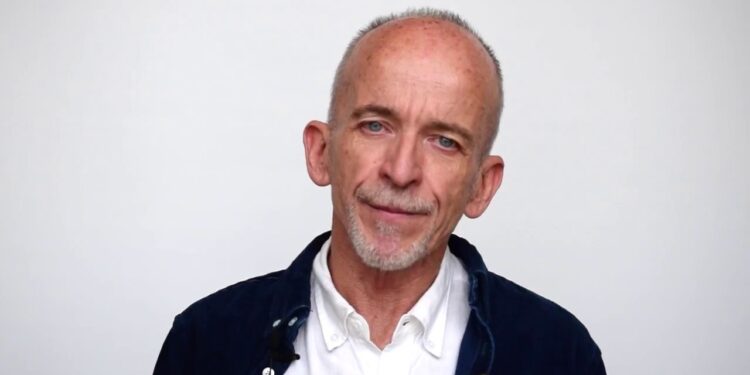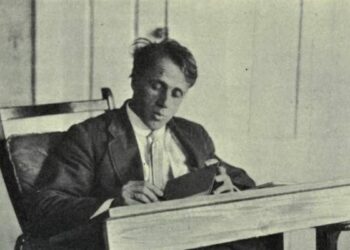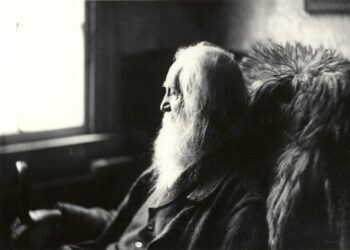Table of Contents
ToggleIntroduction
At The Gym Summary And Themes By Mark Doty Mark Doty, an acclaimed American poet, is known for his mastery in exploring personal experience and complex emotional landscapes. His works often touch on themes such as love, loss, and identity, with a keen sensitivity to the intersections of personal and public life. In “At the Gym,” Doty takes the seemingly mundane setting of a gym and transforms it into a place of profound emotional and philosophical reflection. The poem’s simplicity in setting is contrasted by the deep emotional undercurrents running through it, exploring ideas of human vulnerability, physicality, and the intimate relationships between body and soul.
Doty’s lyricism in “At the Gym” paints a scene where both physical exertion and emotional introspection collide. Through vivid imagery and emotional resonance, the poem contemplates not only the body’s limits and strength but also the psychological underpinnings of human experience. This analysis will break down the poem’s summary, delve into its themes, and explore its stylistic elements.
Summary of At the Gym by Mark Doty
The poem “At the Gym” takes place in a gym setting, where the speaker observes the activity of others and reflects on the nature of physical effort, body image, and the pursuit of self-improvement. The gym serves as a microcosm for the struggle between appearance and reality, exertion and comfort, where individuals engage in intense, sometimes painful physical activity in an effort to transform their bodies and, by extension, themselves.
In the poem, Doty uses a series of observations to depict different individuals in the gym, noting their movements, their expressions, and the exertion on their bodies. The speaker reflects on how these activities are driven by personal insecurities, the desire for change, or the simple pursuit of health. The sweat and strain are symbolic of broader human desires for control, self-acceptance, and achievement.
Throughout the poem, Doty juxtaposes the rawness of physicality with the vulnerability of human experience. The poem explores themes of aging, physical decay, and how individuals grapple with their own limitations and imperfections. The gym, a place of physical prowess, is also depicted as a space where personal reflection, emotional release, and sometimes despair take place. The speaker’s observations become a meditation on the fleeting nature of youth, the passage of time, and the ever-present tension between the body’s frailty and the mind’s striving for perfection.
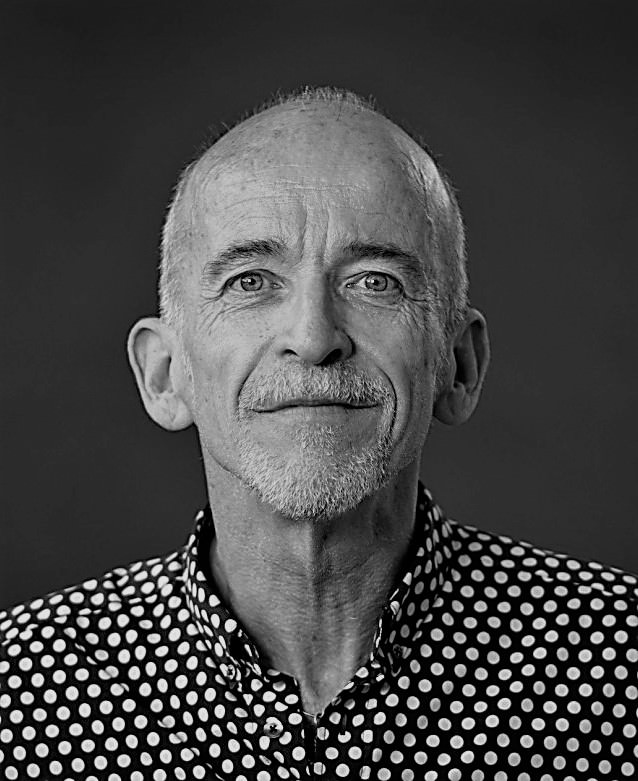
Themes in At the Gym by Mark Doty
1. The Intersection of Body and Soul
One of the key themes in “At the Gym” is the complex relationship between the body and soul. Doty explores how physical activity can serve as both a means of self-expression and a form of self-punishment. The gym, often associated with the goal of enhancing one’s physical form, is also a place where individuals confront their own vulnerability and limitations. Doty raises important questions about the pursuit of bodily perfection, asking whether the effort to sculpt the body is a reflection of deeper psychological or emotional needs.
The tension between the visible and the invisible, the physical and the emotional, is explored through the imagery of sweat, strain, and exertion. The gym serves as a space where these tensions play out in real-time.
Read more
2. Aging and Mortality
Doty subtly touches on themes of aging and mortality in the poem. The effort to strengthen and reshape the body can be read as a response to the inevitable passage of time, a desire to cling to youth and vitality. The imagery in the poem evokes the wear and tear on the body, a reflection of the body’s mortality. Through the characters in the gym, Doty portrays individuals who are acutely aware of their bodies’ decline, either because of age or illness. The poem captures the paradox of striving to achieve perfection while simultaneously acknowledging that perfection is unattainable and fleeting.
3. Vulnerability and Strength
Doty contrasts physical strength with emotional vulnerability, suggesting that the two are deeply interconnected. The gym is a place of physical effort, but it also reveals the emotional fragility of the people working out. The people in the gym are striving to improve their bodies, but Doty invites the reader to consider the emotional burdens they carry, whether it’s fear, insecurity, or sadness. The poem suggests that strength and vulnerability are not opposites but rather co-exist in complex and sometimes unexpected ways.
4. The Illusion of Perfection
Another theme in the poem is the illusion of perfection. The gym is a place where people attempt to attain idealized bodies and, by extension, idealized lives. Doty presents this pursuit as both an admirable goal and an exhausting, ultimately futile effort. Through the gym’s physical exertion, the speaker reflects on the human desire for control and transformation, and how that desire is often thwarted by reality. The illusion of perfection is a driving force in the gym, but Doty reminds us that perfection is often unattainable, and even if it is achieved, it is fleeting.
5. The Beauty of Imperfection
In contrast to the pursuit of perfection, Doty also explores the beauty found in imperfection. The flaws, vulnerabilities, and struggles of the individuals in the gym are highlighted, but these imperfections are not necessarily something to be ashamed of. Instead, Doty suggests that they are part of what makes these individuals human. Through the rawness of the gym setting and the vulnerability of the characters, Doty celebrates the flawed nature of humanity, where beauty is often found in imperfection and resilience.
Literary Techniques in At the Gym by Mark Doty
1. Imagery and Symbolism
Doty uses vivid imagery throughout the poem to evoke the sensations of physical exertion. The descriptions of sweat, muscle strain, and the rhythmic sounds of gym equipment all contribute to creating an immersive experience for the reader. These images symbolize the inner struggles people face, both physical and emotional, and help to underline the theme of self-transformation.
The gym itself serves as a symbol of human effort and desire for change, yet Doty subtly critiques this desire by showing how these efforts are often in vain or, at best, fleeting. The gym is both a place of potential and a reminder of human limitations.
Read more
2. Tone and Voice
The tone of the poem is reflective and meditative, with a sense of observation. The speaker is not merely a passive onlooker but engages with the physical space and the emotions of the people around him. The reflective voice in the poem invites readers to consider their own experiences with the body and the gym. It is a quiet yet powerful exploration of the internal dialogues that often accompany physical activity.
3. Juxtaposition and Contrast
Doty frequently uses juxtaposition in the poem to contrast the physical activity with emotional vulnerability. The juxtaposition of strength and fragility, the striving for perfection against the reality of imperfection, creates a dynamic tension throughout the poem. This contrast highlights the complexities of human experience, where strength often coexists with weakness, and the pursuit of physical and emotional well-being is an ongoing challenge.
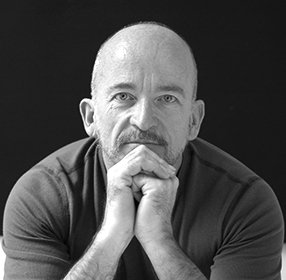
Conclusion
Mark Doty’s “At the Gym” is a poignant and evocative exploration of the intersection between body and soul, aging, and the human desire for control and perfection. The poem takes the familiar setting of a gym, a place typically associated with physicality, and transforms it into a space where deeper emotional and philosophical reflections occur. Through vivid imagery and a meditative tone, Doty invites readers to confront their own relationships with their bodies, the passage of time, and the pursuit of perfection. Ultimately, the poem suggests that the beauty of life is found not in perfection, but in the acceptance of our imperfections and vulnerabilities.
Read more
(FAQ)
1. What is the main theme of “At the Gym”?
The main theme of “At the Gym” is the intersection of physical and emotional experiences. It explores how the gym serves as a place not only for physical exertion but also for introspection about aging, mortality, and the human desire for perfection.
2. What does the gym symbolize in the poem?
The gym symbolizes the human desire for control, self-improvement, and transformation. It is a space where people work to reshape their bodies, but it also serves as a reminder of the limitations and fragility of the body. It can be seen as both a place of potential and a reminder of human imperfection.
3. How does the poem deal with aging and mortality?
The poem subtly addresses aging and mortality by depicting individuals who are grappling with their physical limitations. Doty uses the gym setting to highlight the passage of time, the decay of the body, and the fleeting nature of youth.
4. Why does Doty focus on the imperfections of the people in the gym?
Doty focuses on imperfections to highlight the beauty and humanity found in vulnerability and struggle. Rather than striving for unattainable perfection, the poem suggests that it is our imperfections that make us human and relatable.
5. What literary devices does Doty use in the poem?
Doty uses a range of literary devices, including vivid imagery, symbolism, juxtaposition, and contrast, to deepen the emotional resonance of the poem. These techniques help create a space for reflection on the body, the mind, and the human experience of self-transformation.
Read more

